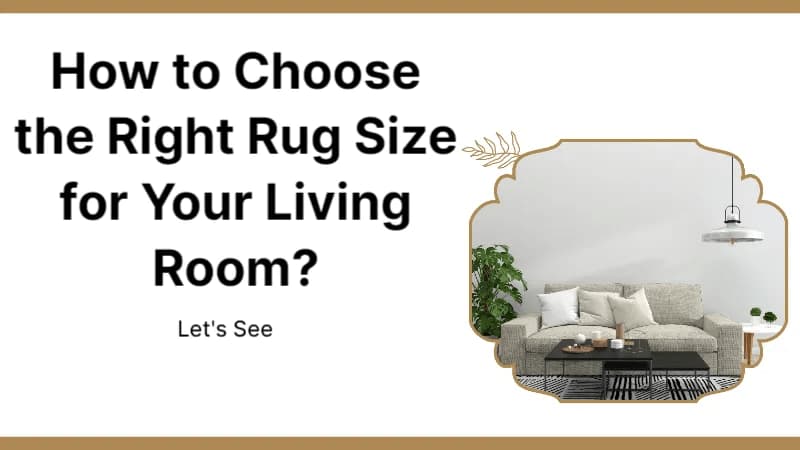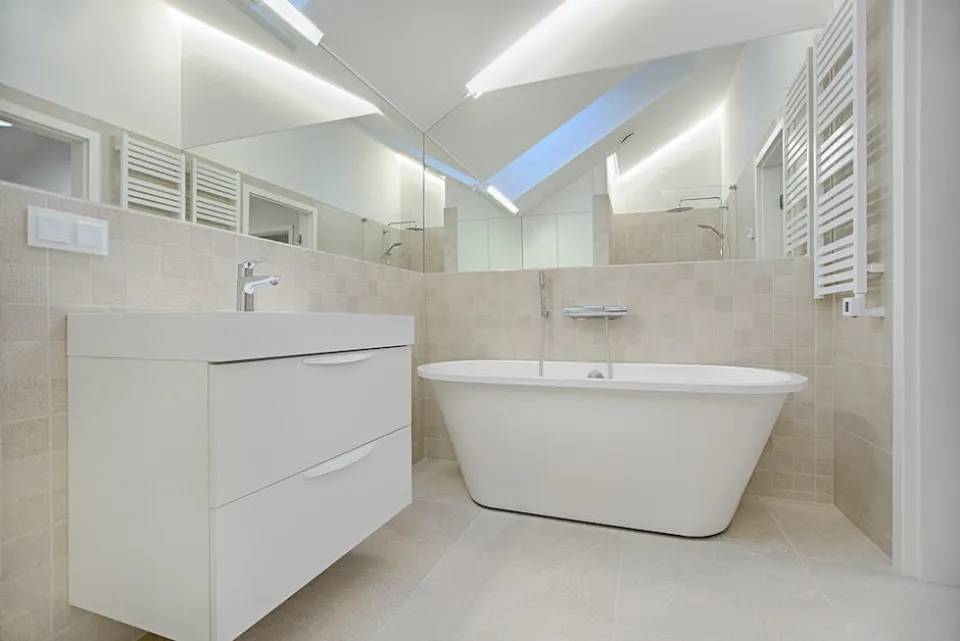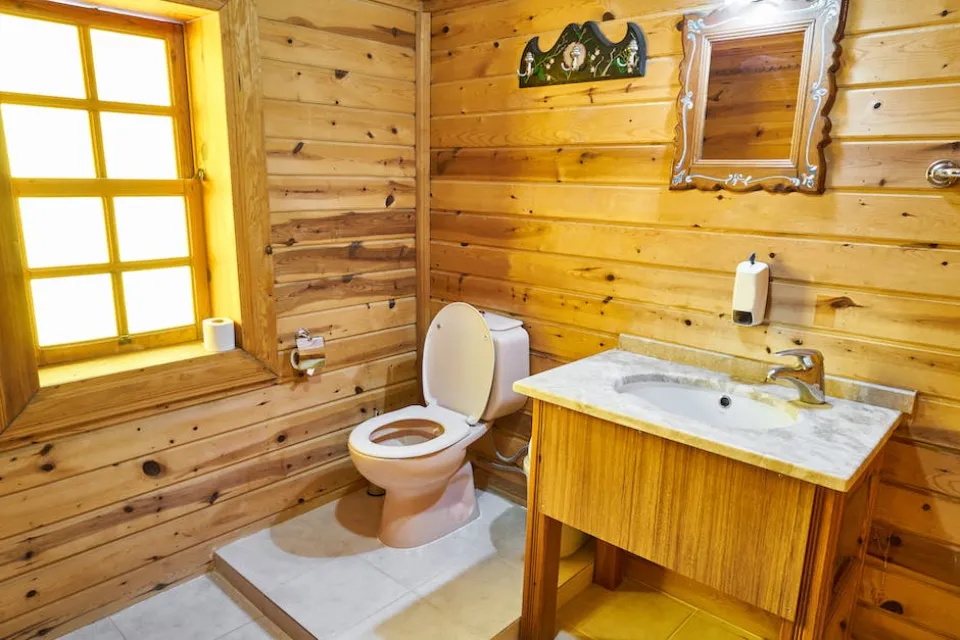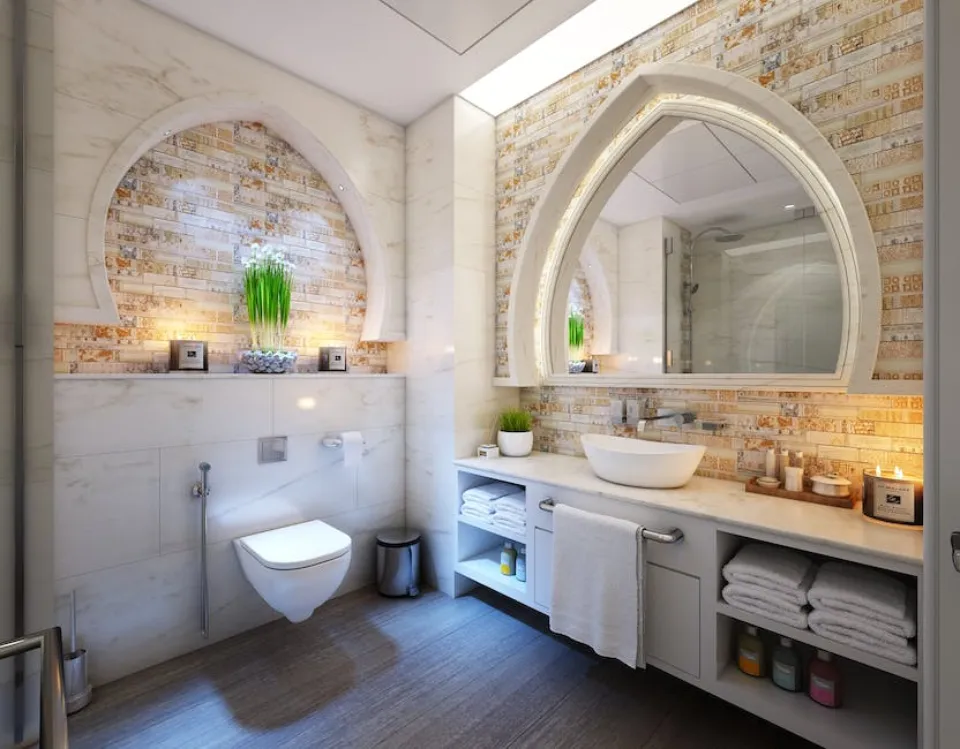The foundation and center of a room are its rugs. A room looks completely balanced when the rug is the ideal size. So, How to Choose the Right Rug Size for Your Living Room?
Considerations include the size, orientation, and use of the room. Here are some guidelines for finding the ideal fit so you can eliminate some of the guesswork in selecting the correct rug size for your space.
How Big Should a Rug Be in a Living Room?
The rug in the living room serves as a focal point of the room, so it must look good and be cozy. While there are no set-in-stone rules for living room rug placement and area rug size, there are a few rug guidelines to help you find the right look and feel for your home. It is also good to note how you can transform living room carpets (and save a bundle) with the clever use of an area rug.
The rule of thumb is that bigger is better, and a few extra inches can make all the difference between your rug tying the room together or making it feel disjointed. Therefore, choosing a larger-size rug will always show that the added cost was worthwhile. We suggest picking a rug size from 8×10 feet to 9×12 feet and ensuring that the rug you buy is at least six to eight inches wider than your sofa on all sides.
If your space permits it, extend the rug out to the length of the largest piece of furniture from the sofa and leave 30 to 36 inches of space between them. Give yourself at least 18 to 24 inches of space if your living room is small. That ought to assist you in making an informed decision about rug size.
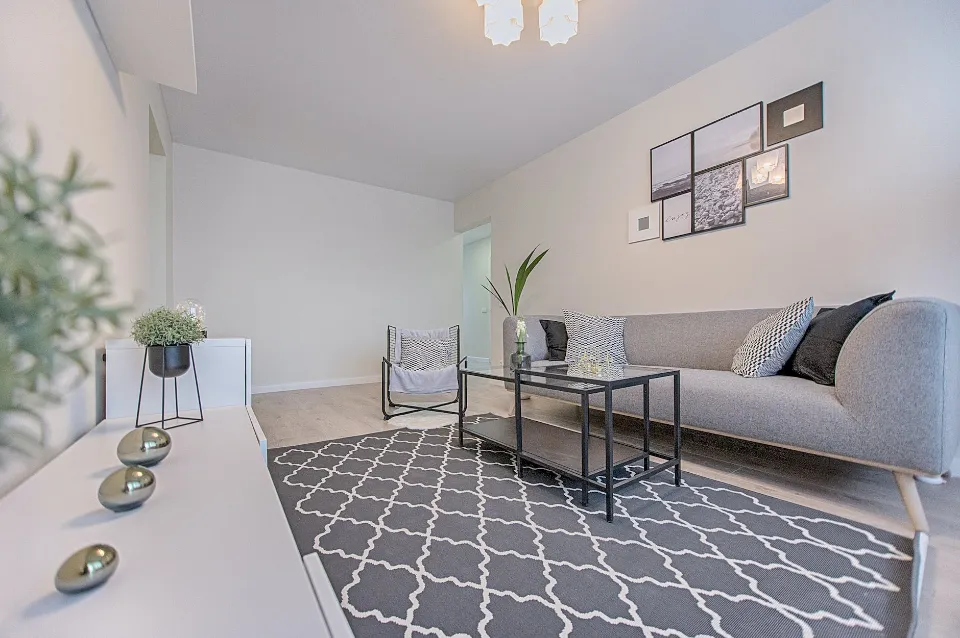
How to Choose the Right Rug Size for Your Living Room?
The existing furniture should be taken into account when determining the size of the rug you should purchase. The sofa and chairs that the rug will be placed under are the main ones.
When your couch is positioned in your living room, you want the rug’s longest edge to touch the front of the furniture. The shorter side of the rug might have one or two armchairs seated on it, while the longer sides are more likely to be open and unoccupied.
Measure the Width of Your Sofa.
The longer edge of the rug should, in general, be wider than the width of the sofa once you’ve determined the width of your sofa. Your sofa must never be wider than your rug, under any circumstances.
The arrangement of the rug and sofa should be ideal, even in small living rooms. After all, we want a balanced appearance, so make sure the rug is wider than the sofa.
In addition, always keep in mind that your sofa’s front legs should extend past the edge of your rug (the illustration below shows you how to do it).
Then Measure the Width of Any Armchairs
This only applies if you plan to set up a conversation pit with one or two accent chairs on the shorter side of the rug. When the armchairs are arranged side by side, you want the rug to be wider than the total width of the chairs.
If you have two armchairs and a side table to sit between them, ensure you allocate additional breathing room between the chairs and the table when calculating the total width of this furniture arrangement.
If there is another sofa to consider, such as the one in the picture above, measure its width and make sure the rug extends beyond both of its sides.
Measure the Perimeter of the Room
Making sure there is sufficient space between the rug’s edges and the room’s exterior walls is another consideration when choosing the right rug size. Around the room’s edge, there should be some bare flooring visible. It’s useful to know your room’s overall size in this situation.
Can You Do a Round Rug in a Living Room?
A circular pattern is not the ideal rug shape for a living room. The circle underneath can frequently appear a little strange due to the clean lines of furniture like sofas and armchairs.
If a living room is really small and has an unusual shape, I would only recommend a round rug because the edges of a small standard rug would otherwise run into a wall or piece of furniture.
In this case, you can place a round rug underneath one sofa arm so that more of the rug’s top is visible and becomes the focal point of the room. Though not ideal, it’s better to have a round rug in this instance, to make the room feel cosy, than to have nothing on the floor at all.
Read about How to Make a Small Bedroom Look Bigger?
How Do You Place a Rug in a Living Room?
Your living room shape, size, and furniture should dictate the rug size and orientation to ensure the space looks comfortable and feels connected. In order to ground your conversation space, your living room rug typically needs to be the same size as your seating area. Additionally, purchase a rug that is at least six to eight inches wider on either side than your sofa piece to avoid having your room look awkward.
- Always read the room first:A well-proportioned rug for your living room is essential (large rooms require large rugs), so keep that in mind when selecting its size and orientation.
- Orient the rug with the living room shape:The rug should be positioned lengthwise in long living rooms to match the length of the room. It helps if you have larger furniture (like a sectional), if your room is an unusual shape, or if you haven’t put any of your furniture up against a wall. This will help the space look bigger and create a visual flow.
- Visualize the final layout:Before you buy a rug for your living room, place one there with painter’s tape. It enables you to see your rug from every angle in relation to the space. To find the best fit for your room and budget, experiment with different area rug sizes and feel the rug’s texture.
All Legs On
Give yourself about eight inches between the edge of the furniture and the rug if you have enough room in your living room and want to fit all your conversational furniture pieces (such as sofas, accent chairs, and coffee tables) on your rug.
Also, leave around ten to 18 inches of space from rug to wall (or more if you have room). Going too close to the wall gives the impression of an awkward “almost” wall to wall carpet. The only exception to this rule is if your sofa is against a wall or is only a few inches away from one, or if your space is limited.
Front Legs Only
The preferred go-to living room rug placement is the front-legs-only arrangement for a number of factors. It can make a small space appear larger, is more cost-effective, and better fits a small-sized room. The back legs of the sofas and chairs you use in this arrangement rest on the bare floor, with only the front legs on the rug.
The rule is to have the rug only go under each furniture piece about one-third of its width. Without incurring the added expense of a room-sized rug, it keeps the seating area uniform and produces a cohesive appearance.
The Floating Layout (All Legs Off)
Here, you only set your coffee table or other major piece of furniture on your rug; no seating is used. The layout can look cool, but only if done right. To get the proportions right, base the rug’s size on the interior dimensions of your seating area.
When done correctly, the rug will fill the empty space that your furniture grouping leaves behind while looking intentional and stylish. This arrangement works best with a smaller rug, like a 5 x 7 rug.
Layer Two Rugs Atop Each Other
Do you have a vintage rug that is 5 x 8 but feels a little small despite perfectly matching your living room decor? You can layer this rug on top of a bigger one, so don’t worry. If you find the right pairing, this layout can look fantastic. One best-practice is to choose a natural jute rug as your large base and place a smaller rug on top, preferably with a different color and material.
Rounded Arrangement
Choose a large round living room rug placement to distinguish your sitting area. Choose a rug that is big enough but still standard-sized to fit all of your furniture with a few extra inches. Additionally, you can purchase a rug that is big enough to fit at least the front legs of each piece.
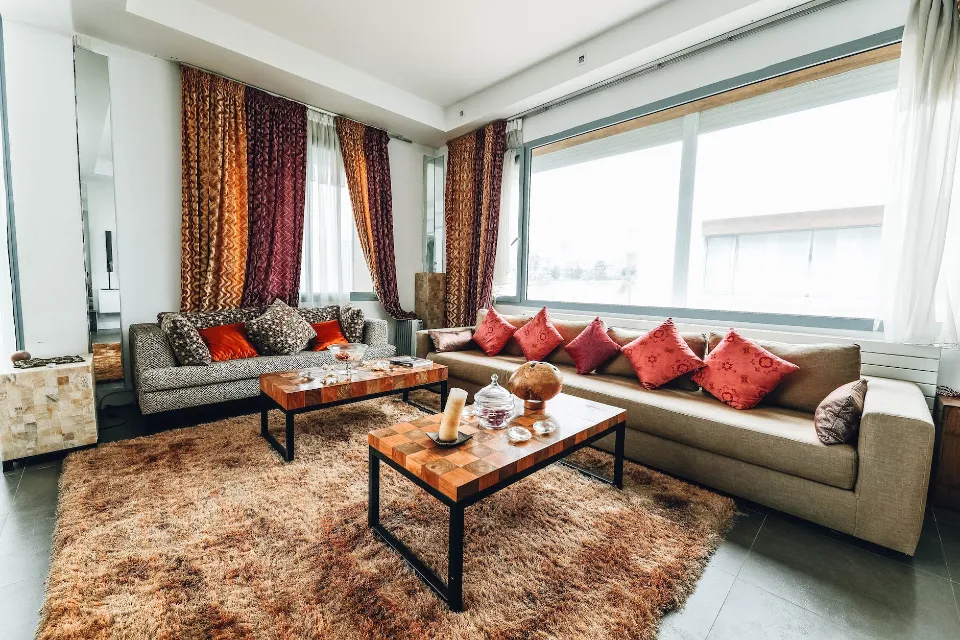
Choosing Living Room Rug Colors and Fabrics
Living room rugs anchor the space, so the mood can be set by the color, design, and material of your rug. Dark, rich colors help define more intimate spaces while lighter colors enlarge the appearance of smaller spaces. Warm hues like yellow, red, or orange add warmth, while cool ones create a calm atmosphere. Pick rug colors based on your primary furniture, like a sofa. Choose a patterned rug if it’s a solid color, and vice versa.
Consider the following for living room rug fabrics:
- Rugs made of strong, long-lasting materials can withstand heavy foot traffic. Jute and seagrass are acceptable rug materials. They are also ideal for outdoor use.
- Fabrics that are soft and cozy provide comfort and are ideal for reclining. Pick cottonand wool rugs because they are soft, easy to clean, and provide insulating properties against the cold.
- Synthetic rugsoffer a balance between cozy and strong rugs and are cheaper than natural fabrics like wool.
Standard Living Room Rug Size Guide
Floor rugs and accent rugs truly come in just about any size you can think of. Much of it depends on the retailer or supplier you’re using, as well as the location and method of the rug’s manufacture. Although various retailers will have their own preferred measurements, there are some sizes that are accepted worldwide.
There are three standard rug sizes for living rooms:
- Small rug: 160cm x 230cm (5.25 x 7.55 feet)
- Medium rug: 250cm x 350cm (8.2 x 11.48 feet)
- Large rug: 300 x 400cm (9.84 x 13.12 feet)
The sizes of rugs you’ll typically find in stores are represented by the measurements above.
As previously mentioned, there will be sizes besides the three listed above, and you can get custom sizes to fit your living room, but use the above as a general guide.
